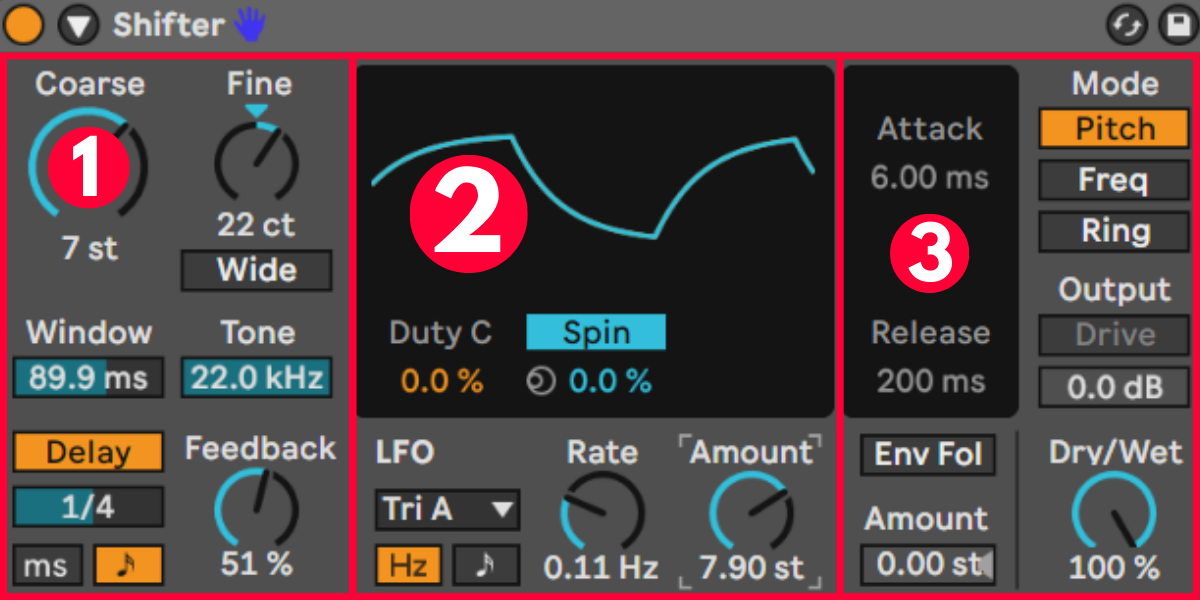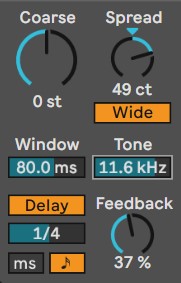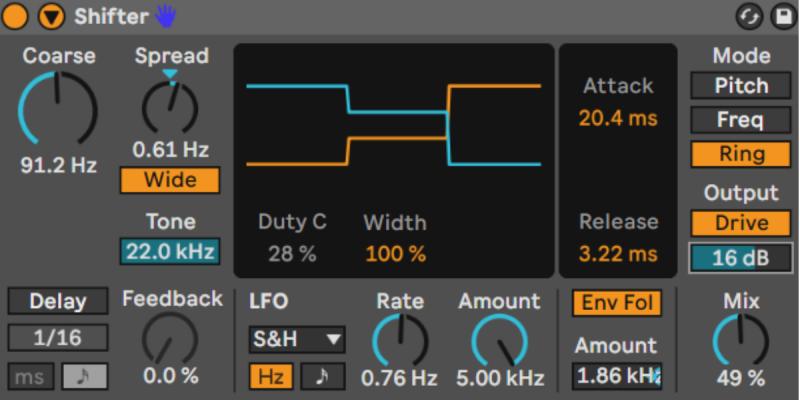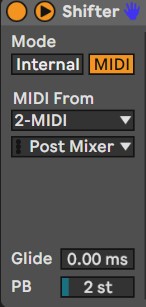Shifter Audio Effect
Since Ableton Live 11.1, the Shifter audio effect has been a welcome addition to Live’s plugin arsenal. The shifter effect manipulates the pitch of an audio signal, more commonly known as a pitch shifter. You can find it under Audio Effects > Pitch & Modulation > Shifter.

1. Pitch & Delay
We can divide this plugin into three sections. The first is the Pitch & Delay section. There’s both a Coarse pitch in semitones and a Fine pitch in cents. If you enable the Wide function, the Fine-tune will be replaced by a Spread control. This means the left channel is pitched up, while the right channel is pitched down, or vice versa, increasing the stereo width.

Below the Coarse tune is a Window control. A window is a small sample of the incoming audio signal to which processing is applied. Typically longer windows work better for low-frequency signals, while shorter windows are best for higher frequencies. But like always, just play around and judge for yourself.
The Tone control is a low-pass filter to attenuate higher frequencies. This filter is inserted into the delay’s feedback path. The Delay has a delay time control in note values or milliseconds and a feedback control. But this delay doesn’t work like a regular delay. The Pitch is actually part of the feedback path. Meaning that with a positive pitch setting, each delay is pitched up, and up, and up. So you can actually create some cool shimmery sound effects this way.
2. LFO
In the middle, we’ve got the LFO controls. There are 10 different wave shapes to choose from, including two random shapes. The LFO can be synced to note values or a frequency ranging from 0.01Hz to 50Hz. The Amount changes the modulation amount up to 24 semitones.
The Phase control delays the right channel to create a wide stereo field. By clicking the Phase button you can switch to a Spin mode on most waveforms. This isn’t an offset like the phase mode, but it speeds up one channel relative to the other.
You can also distort the waveform with the Duty cycle control and on the random S&H wave shape there’s a width control, which replaces the phase control.

3. Envelope & Pitch Modes
In addition to an LFO the shifter plugin also features an Envelope Follower. In this case, the amplitude of the incoming audio signal is tracked and turned into a modulation signal. The Amount can be set to +/- 24 semitones. There’s also a separate attack and release control.
On the right-hand side, we can select from 3 different pitch-shifting modes. The first one shifts the pitch in semitones, while the second mode has a wider range and shifts the frequency in hertz. There’s also a Ring Modulation mode that shifts both up and down at the same time. In Ring mode, the drive control becomes active to add distortion.
And finally, we’ve got a dry/wet control at the bottom right of the plugin.
Sidechain

On top, right next to the bypass button, there’s an arrow. If you click here you’ll unfold the sidechain options. Here you can switch between Internal and MIDI mode. With MIDI mode activated, you can select an external MIDI channel to play actual notes. So you can turn a steady tone into a melody or bassline. It is monophonic though, so you can only play one note at a time.
At the bottom there’s also a Glide control to smoothly transition from note to note, and a Pitchbend setting to adjust the maximum pitch bend range.

